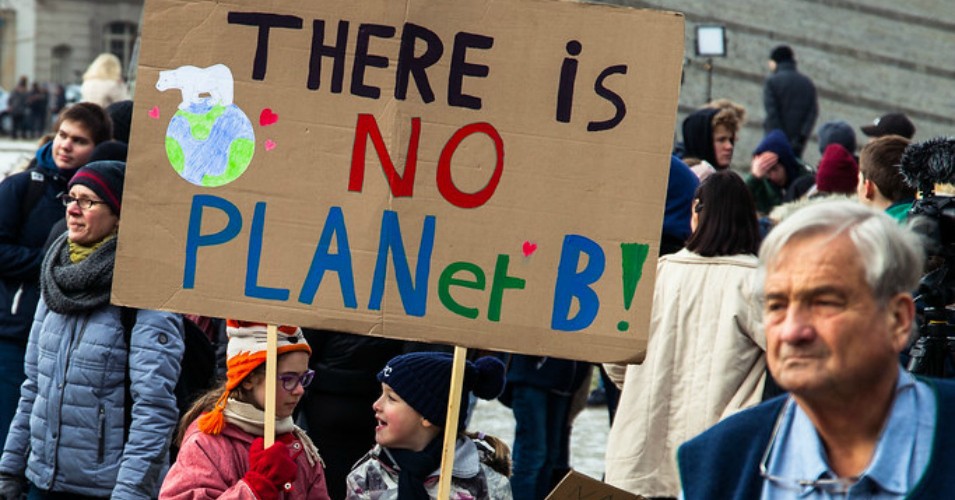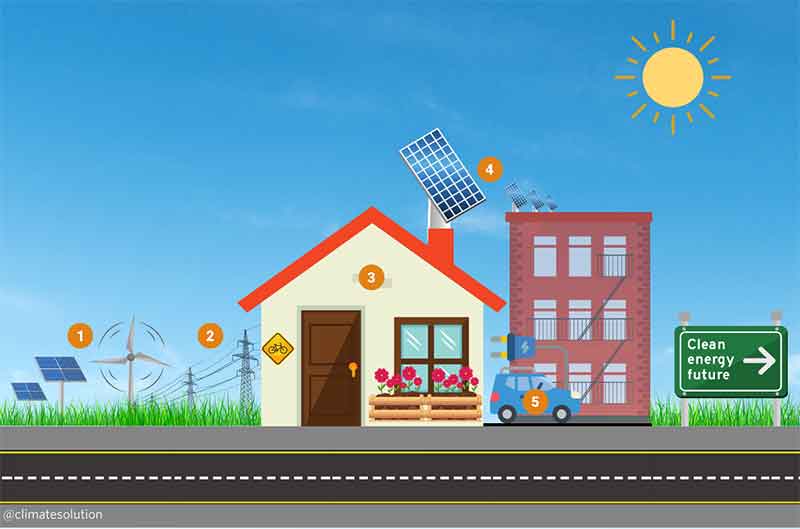
The disparity in greenhouse gas (GHG) emissions between rich and poor countries, and between rich and poor people within countries is just as extreme as economic inequality, a new report finds.
Overall, emissions are closely correlated with income, according to a report released Tuesday by the World Inequality Lab, a Paris-based research organization.
“Wealthy individuals pollute much more than low-income groups,” Lucas Chancel, the co-director of the World Inequality Lab and lead author of the report, told Yahoo News in an email. “An extreme illustration of this is when billionaires decide to do a nine-minute trip to space. Estimates suggest this adds 75 tonnes of carbon per passenger. It takes a lifetime for about a billion people on earth to reach this level of per capita emissions.”
Emissions inequality accompanies another form of climate inequality: the tendency of the adverse impacts of climate change to fall hardest on poorer communities and poorer countries.
“Climate change is going to exacerbate global inequalities, which are already very high,” Chancel noted. “Poorest countries like Bangladesh or Small Island States will be hit very hard by rising sea levels or extreme weather events. In rich countries, the poorest groups of the population are also more vulnerable to floods or forest fires induced by climate change, because they have fewer resources to recover after their homes are destroyed.”
The report’s key findings include striking differences in emissions between nations and between individuals, based largely on income:
- There is a huge gap in emissions between countries. The top 10 percent of highest-emitting countries are responsible for 48 percent of all emissions, while the bottom half of countries produce just 12 percent of the total.
- That gap is even wider when adjusting for population. “Average emissions in Sub-Saharan Africa are close to 50% above the 1.5°C sustainable level and about half of the 2°C budget,” the report concludes. “At the other end of the spectrum, per capita emissions in North America are 21 tonnes per capita (three times the world average and six times higher than the 2°C sustainable level).”
- This gap grows even further when historical emissions are considered, because rich countries industrialized first. In cumulative emissions, North America accounts for 27 percent of the total and Europe for 22 percent, whereas Latin America has contributed only 6 percent and sub-Saharan Africa only 4 percent.
- Even compared with its income, the United States is an outsized climate polluter. “US average emissions are 3.2 times the world average, while its average income is three times the world average, and Europe’s emissions are less than 1.5 times the world average while the income figure is close to two,” the report notes.
- There is very little left in the so-called carbon budget, meaning the amount of greenhouse gases that can still be emitted before the world breaches the threshold of 1.5 degrees Celsius warming that scientists say will trigger a cascade of devastating impacts. “At current global emissions rates, the 1.5°C budget will be depleted in six years and 2°C budget in 18 years,” the report states. At current rates, the rich countries that account for most emissions are taking up almost all of that budget.
- Individuals who burn the most fossil fuels account for a disproportionate share of emissions within their countries. In North America, the bottom half of residents emit fewer than 10 tons of carbon dioxide equivalent per year, compared with over 70 tons for the top 10 percent.
It is easy to understand why these big discrepancies exist. Richer people have larger homes with more high-energy amenities like air conditioners. They are more likely to own cars, to have bigger cars and to take airplane trips. They buy more new products, from smartphones to clothes, that each have their own carbon footprint.
It is also unsurprising that the average American produces more emissions, adjusted for income, than their European counterparts: Americans tend to have larger homes and to drive more and in less efficient cars. That’s largely because of different government policies. Gasoline taxes in the United States are the second-lowest, after Mexico, of any country in the Organization for Economic Cooperation and Development. The average American pays $0.56 per gallon in gasoline taxes. In the United Kingdom, the average gasoline tax per gallon is $2.82; in Japan it is $1.91, and in Germany it’s $2.79.

“Carbon emissions of individuals are broadly due to three dimensions: first, petrol people put in their cars or energy used to heat their homes; second, the carbon embedded in the services and goods people buy; and third the carbon associated with investments people make,” said Chancel. “Poorest groups purchase less goods and services than the richest individuals — and the poorest half of the population in a country like the U.S. makes little or no investments because they own so little wealth. Therefore we see that countries with large economic inequalities will also have large carbon inequalities. In the U.S., the poorest half of the population emits about 10 tonnes of carbon per year, while the richest 10% emit about 75 tonnes.”
This means that to avert catastrophic climate change, not only do rich countries need to rein in fossil fuel consumption, the richest residents of every country also have to dramatically cut their emissions.
“The poorest half of the population in rich countries is already at (or near) the 2030 climate targets set by rich countries, when these targets are expressed on a per capita basis,” the report finds. “This is not the case for the top half of the population. Large inequalities in emissions suggest that climate policies should target wealthy polluters more.”

















































